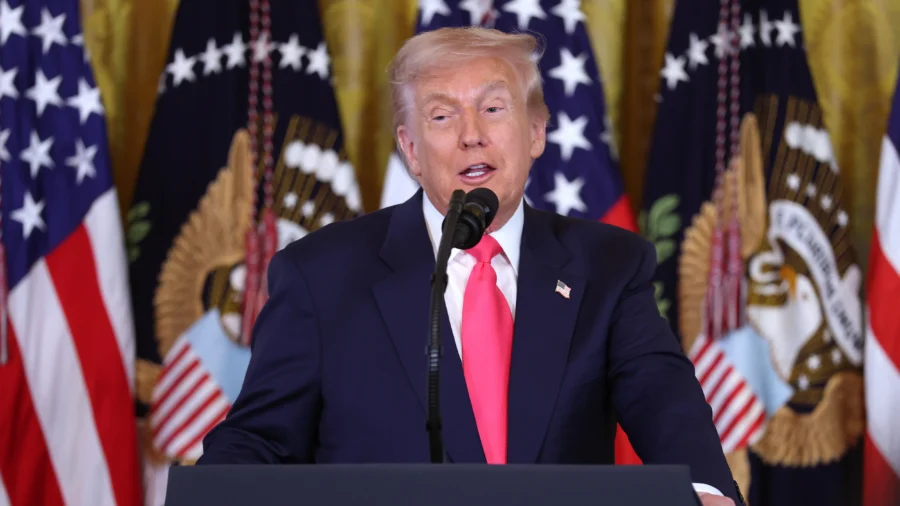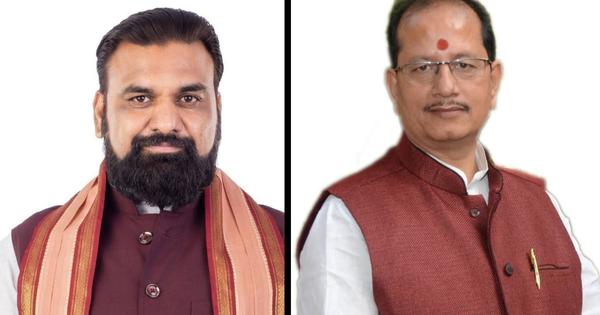Did Prashant Kishor’s Jan Suraaj Party make any impact in the Bihar Elections? Read what the data says
The Bihar assembly election was one of the most unpredictable contests in recent years. Amid the traditional tug-of-war between the National Democratic Alliance (NDA) and the Mahagathbandhan (MGB), a new entrant, Prashant Kishor’s Jan Suraaj Party (JSP), grabbed attention not by winning seats but by shaping outcomes in dozens of constituencies. Jan Suraaj, founded by political strategist Prashant Kishor, entered the 2025 Bihar Assembly election promising clean governance, decentralised leadership and people-driven politics. But failed to translate its social media buzz into electoral success. Even though the party’s performance disappointed its followers, it offers insight into the difficulties of starting a political movement from scratch in India’s complex electoral environment. Even though the party’s performance disappointed its followers, it offers insight into the difficulties of launching a political movement from scratch in India’s complex electoral environment. Where Jan Suraaj Contested and What Its Presence Actually Looked Like ? Jan Suraaj’s entry into the 2025 Bihar Assembly election was wide in terms of seats but thin in terms of depth. The party fielded candidates across many constituencies, yet its vote share was uneven and scattered, lacking a concentrated base. Jan Suraaj contested 238 seats across Bihar but failed to open its account, securing zero seats while gaining 3.5% of the total vote share. In fact, the JSP received less than NOTA in about 60 seats, and its vote percentage was lower than that of Independents, who won about 5%. Even in the seats it contested, the pattern was inconsistent: 1. Some Jan Suraaj candidates received only symbolic support, barely registering in the final tally. 2. Some managed to pick up mid-level vote numbers, usually from non-aligned young voters or floating voters. There was no constituency where Jan Suraaj emerged as a top-tier contender, nor did it secure dominant vote clusters in any region. Even the party came in second place in only one seat and third in 115 others, showing that it has some appeal, but not much strength anywhere in the state. It received 10,000–15,000 votes on 18 seats, 15,000–20,000 votes on 11 seats, 20,000–25,000 votes on three seats, 35,000–40,000 votes on two seats, and 58,000 votes on 1 seat, possibly because the NDA candidate’s nomination was rejected. Jan Suraaj was the default beneficiary in two of its top four candidate seats, where nominations for either the NDA or the Mahagathbandhan candidate were denied. The larger electoral picture: A multi-cornered contest, not a three-way fight Within the 36 constituencies where JSP’s vote count exceeded the final winning margin, there is a crucial distinction that defines the fundamental nature of its impact. Of these 36 seats, 10 were ultimately won by the same party that had won them in 2020, despite JSP polling more votes than the margin of victory. These seats show that JSP did not overturn the electoral outcome or shift the constituency’s political preferences. In the remaining 26 seats, a different story is portrayed simplistically. These seats saw a change in winner between 2020 and 2025, but the shift cannot be automatically linked to JSP alone. While JSP’s vote count was higher than the margin in all of them, these contests were influenced by multiple factors, including the presence of stronger third-party players such as LJP, RLSP, AIMIM, and independents. Many of these seats had already become unstable due to local anti-incumbency, candidate switches, alliance breakups between elections, and shifting caste blocs. For example, in the 2020 election, the Sherghati constituency was won by RJD with a margin of 16690 votes over JDU, the runner-up. We also note that in the 2020 election, Chirag Paswan’s LJP was contesting alone in more than 100 seats and dented the NDA alliance. In this seat, LJP had gained more than 24000 votes, but in the 2025 election, LJP was part of the NDA alliance and won the seat with more than 13000 votes, underscoring the importance of other parties. Let’s take another example of the Cheria-Bariarpur constituency. In the 2020 election, RJD won this seat with more than 40000 votes, while LJP was the bigger factor, winning more than 25000 votes. But in this election, LJP was in the NDA; JDU Won that seat. Does that mean Jan Suraaj had no relevance? No, in some cases the winning party changed because the original 2020 winner lost ground on its own, and in others JSP was only one of several dividing forces that contributed to a close finish. Also, in some seats, it definitely dented the MGB parties’ support for the NDA. Taken together, these 26 seats show change but not necessarily change driven solely by JSP. They illustrate that JSP acted as part of a wider pattern of vote fragmentation in Bihar. It contributed to tighter margins and added a layer of unpredictability, but a combination of different parties,



The Bihar assembly election was one of the most unpredictable contests in recent years. Amid the traditional tug-of-war between the National Democratic Alliance (NDA) and the Mahagathbandhan (MGB), a new entrant, Prashant Kishor’s Jan Suraaj Party (JSP), grabbed attention not by winning seats but by shaping outcomes in dozens of constituencies.
Jan Suraaj, founded by political strategist Prashant Kishor, entered the 2025 Bihar Assembly election promising clean governance, decentralised leadership and people-driven politics. But failed to translate its social media buzz into electoral success. Even though the party’s performance disappointed its followers, it offers insight into the difficulties of starting a political movement from scratch in India’s complex electoral environment. Even though the party’s performance disappointed its followers, it offers insight into the difficulties of launching a political movement from scratch in India’s complex electoral environment.
Where Jan Suraaj Contested and What Its Presence Actually Looked Like ?
Jan Suraaj’s entry into the 2025 Bihar Assembly election was wide in terms of seats but thin in terms of depth. The party fielded candidates across many constituencies, yet its vote share was uneven and scattered, lacking a concentrated base. Jan Suraaj contested 238 seats across Bihar but failed to open its account, securing zero seats while gaining 3.5% of the total vote share. In fact, the JSP received less than NOTA in about 60 seats, and its vote percentage was lower than that of Independents, who won about 5%. Even in the seats it contested, the pattern was inconsistent:
- 1. Some Jan Suraaj candidates received only symbolic support, barely registering in the final tally.
- 2. Some managed to pick up mid-level vote numbers, usually from non-aligned young voters or floating voters.
There was no constituency where Jan Suraaj emerged as a top-tier contender, nor did it secure dominant vote clusters in any region. Even the party came in second place in only one seat and third in 115 others, showing that it has some appeal, but not much strength anywhere in the state. It received 10,000–15,000 votes on 18 seats, 15,000–20,000 votes on 11 seats, 20,000–25,000 votes on three seats, 35,000–40,000 votes on two seats, and 58,000 votes on 1 seat, possibly because the NDA candidate’s nomination was rejected. Jan Suraaj was the default beneficiary in two of its top four candidate seats, where nominations for either the NDA or the Mahagathbandhan candidate were denied.
The larger electoral picture: A multi-cornered contest, not a three-way fight

Within the 36 constituencies where JSP’s vote count exceeded the final winning margin, there is a crucial distinction that defines the fundamental nature of its impact. Of these 36 seats, 10 were ultimately won by the same party that had won them in 2020, despite JSP polling more votes than the margin of victory. These seats show that JSP did not overturn the electoral outcome or shift the constituency’s political preferences. In the remaining 26 seats, a different story is portrayed simplistically. These seats saw a change in winner between 2020 and 2025, but the shift cannot be automatically linked to JSP alone.
While JSP’s vote count was higher than the margin in all of them, these contests were influenced by multiple factors, including the presence of stronger third-party players such as LJP, RLSP, AIMIM, and independents. Many of these seats had already become unstable due to local anti-incumbency, candidate switches, alliance breakups between elections, and shifting caste blocs. For example, in the 2020 election, the Sherghati constituency was won by RJD with a margin of 16690 votes over JDU, the runner-up. We also note that in the 2020 election, Chirag Paswan’s LJP was contesting alone in more than 100 seats and dented the NDA alliance.
In this seat, LJP had gained more than 24000 votes, but in the 2025 election, LJP was part of the NDA alliance and won the seat with more than 13000 votes, underscoring the importance of other parties.
Let’s take another example of the Cheria-Bariarpur constituency. In the 2020 election, RJD won this seat with more than 40000 votes, while LJP was the bigger factor, winning more than 25000 votes. But in this election, LJP was in the NDA; JDU Won that seat. Does that mean Jan Suraaj had no relevance? No, in some cases the winning party changed because the original 2020 winner lost ground on its own, and in others JSP was only one of several dividing forces that contributed to a close finish. Also, in some seats, it definitely dented the MGB parties’ support for the NDA.
Taken together, these 26 seats show change but not necessarily change driven solely by JSP. They illustrate that JSP acted as part of a wider pattern of vote fragmentation in Bihar. It contributed to tighter margins and added a layer of unpredictability, but a combination of different parties, local conditions, and competitive equations shaped the actual seat flips. Thus, while JSP’s vote share exceeded the winning margin in these 26 constituencies, the overall interpretation remains that JSP was one of the factors, not the factor, in determining how these seats shifted from their 2020 outcomes.

How PK’s campaign may have indirectly benefited the BJP?
While Jan Suraaj did not align with any alliance, one perceptible trend emerged across several constituencies: Prashant Kishor’s broad outreach and aggressive communication about Bihar’s governance issues unintentionally shaped voter psychology, potentially helping the BJP in certain areas. This influence was not through votes directly shifting to JSP but through the awareness environment created around the election.
PK’s campaign highlighted unemployment, migration, education gaps, and the failures of successive governments. However, for many voters, especially those who feared a potential return of what is commonly referred to as “Jungle Raj”, PK’s messaging did not translate into votes for Jan Suraaj. Instead, it amplified their sense that the election was entering a high-risk zone. This perception pushed many undecided, anti-RJD, and cautious voters to consolidate behind the BJP, which they viewed as the only strong counterweight to prevent an MGB resurgence.
This behavioural pattern emerged because:
- 1. Voters understood that a vote for Jan Suraaj would not change the government and might be “wasted” in a tight contest.
- 2. JSP did not look capable of defeating either NDA or MGB, so risk-averse voters chose the safer, more established alternative.
- 3. PK repeatedly attacked both alliances, but the fear of RJD’s past governance led many voters to interpret his criticism of JDU as a signal that only the BJP could stop MGB.
- 4. Anti-RJD voters became more alert due to PK’s state-wide padyatra narratives about systemic issues.
Conclusion
The numbers make one thing clear that Jan Suraaj did not emerge as a decisive political force in terms of winning seats, but its scattered vote share undeniably shaped the contours of the 2025 Bihar election. In 36 constituencies, JSP’s votes exceeded the winning margin yet only 10 of those seats kept the same winner from 2020, while the remaining 26 seats saw changes driven by a mix of JSP’s presence, stronger third parties like LJP and AIMIM, local anti-incumbency, and shifting caste alignments. At the same time, Prashant Kishor’s state-wide messaging created a heightened political awareness that, intentionally or not, pushed many risk-averse voters toward the BJP as a bulwark against the return of RJD-led governance.
In the end, the Bihar election was not decided by any one player but by a combination of tight margins, fragmented votes, and a political field more crowded than ever. Jan Suraaj did not change who governed Bihar, but it did change how competitive, unpredictable, and divided the race became and that influence, even without seats, is now part of the state’s electoral record.




































































